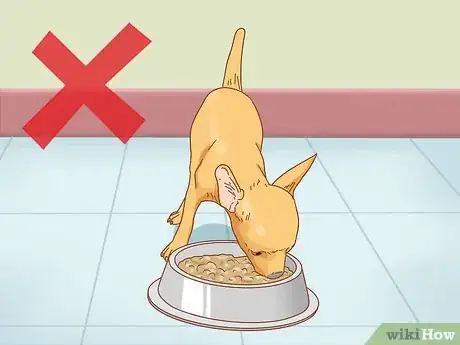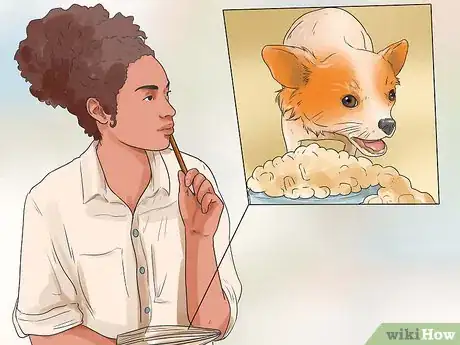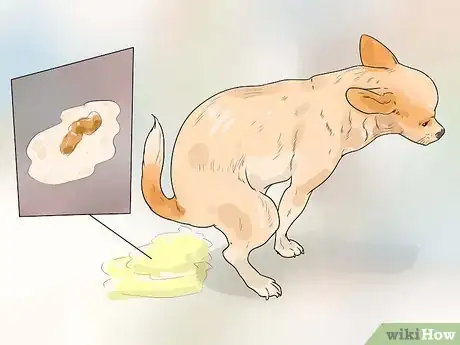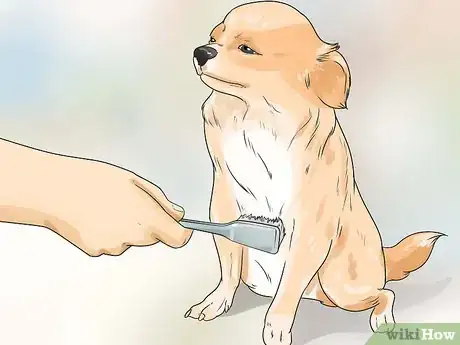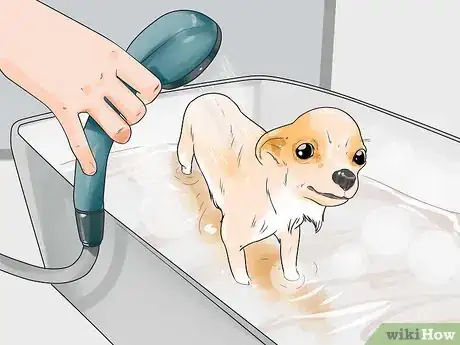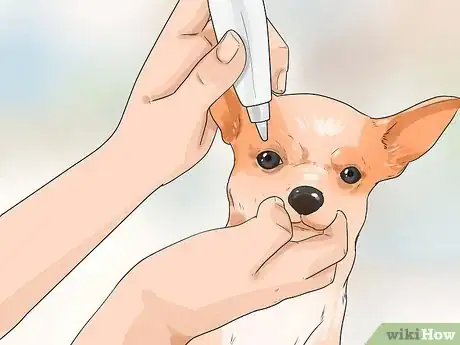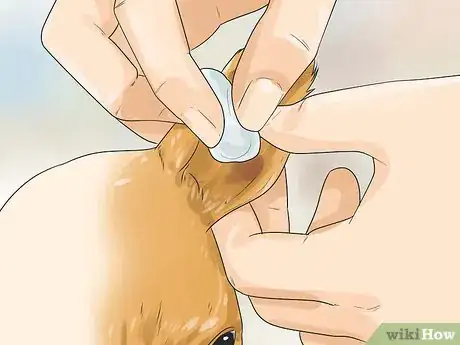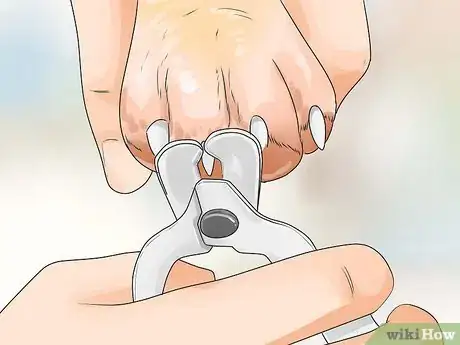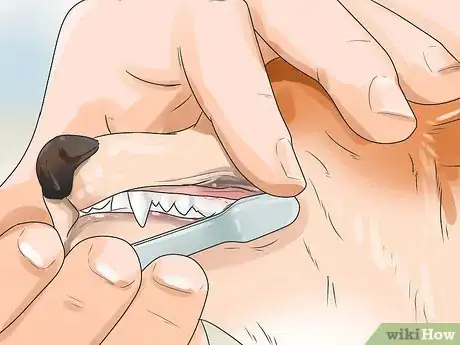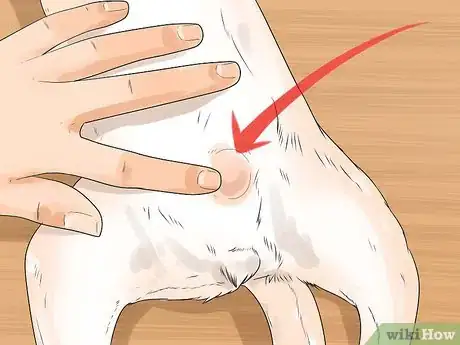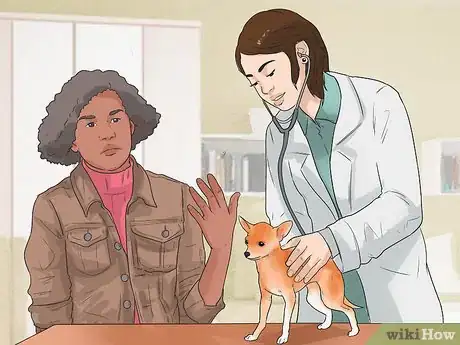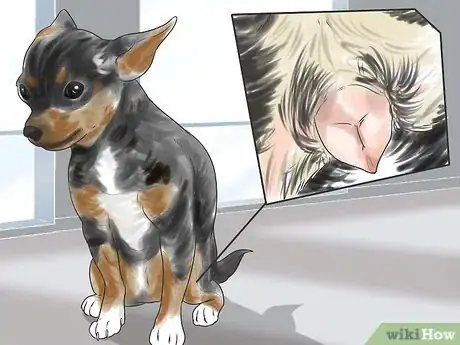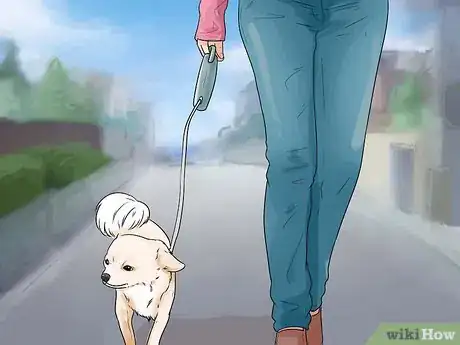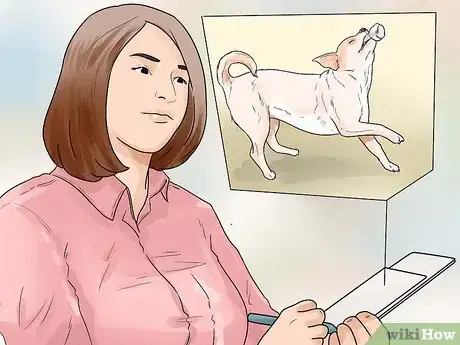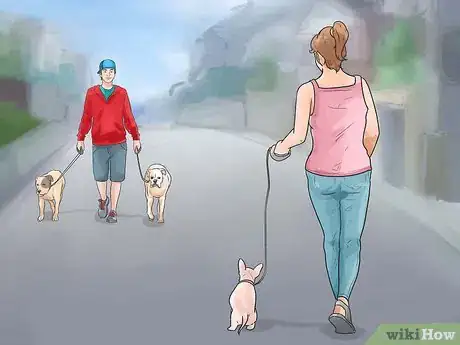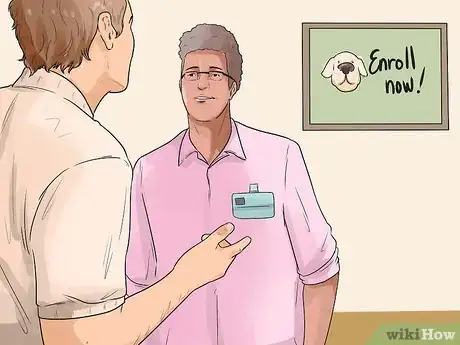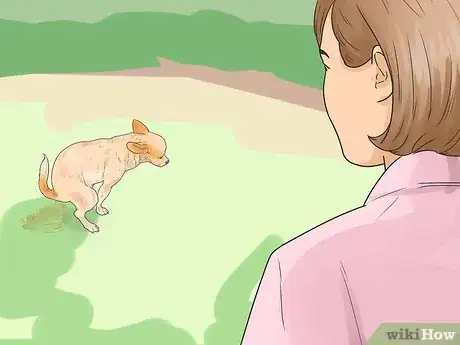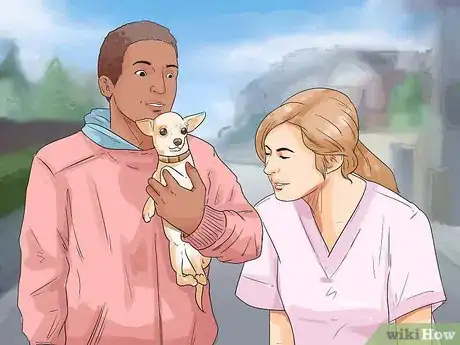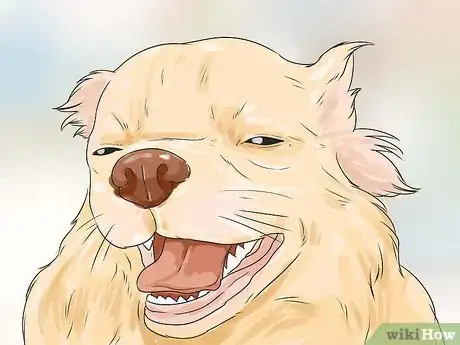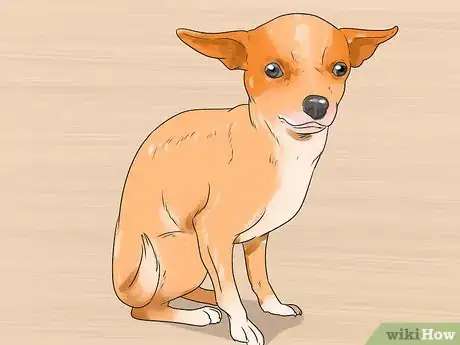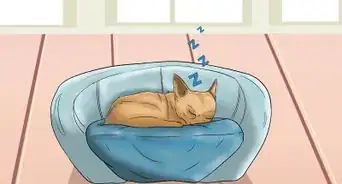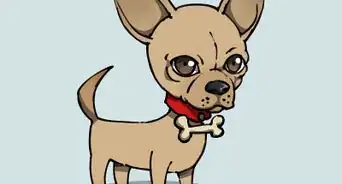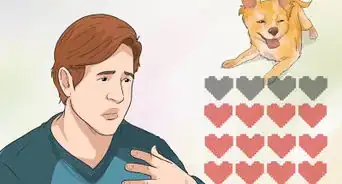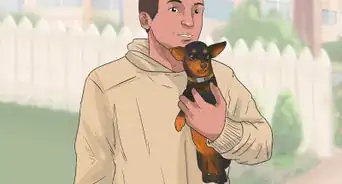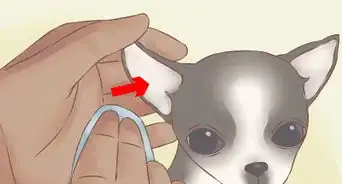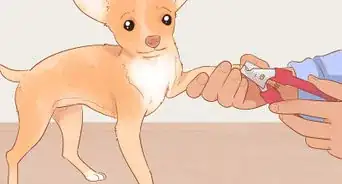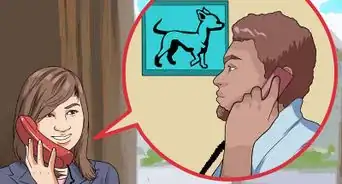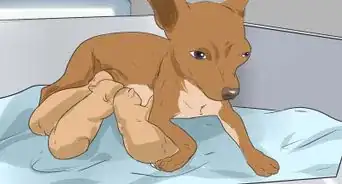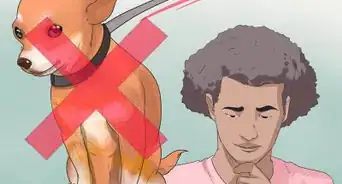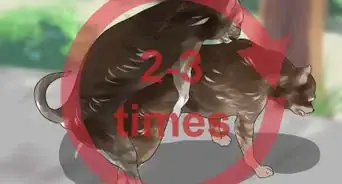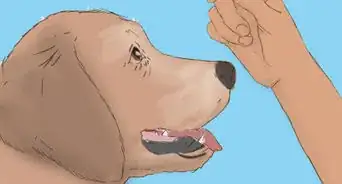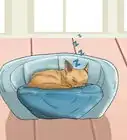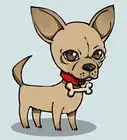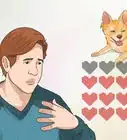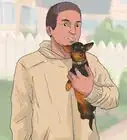This article was co-authored by Sheri Williams. Sheri Williams is a Certified Dog Trainer and Behaviorist and the Owner of sheriwilliams.com, a business that specializes in teaching veterans how to turn their dogs into service dogs or emotional support animals to assist with PTSD. Based in the Los Angeles, California metro area, Sheri has over 20 years of dog training experience and also runs a general dog training practice specializing in rehabilitating dogs through positive reinforcement training techniques. She is certified by The Animal Behavior and Training Association.
There are 14 references cited in this article, which can be found at the bottom of the page.
wikiHow marks an article as reader-approved once it receives enough positive feedback. This article received 20 testimonials and 95% of readers who voted found it helpful, earning it our reader-approved status.
This article has been viewed 339,750 times.
Chihuahuas are tiny dogs with big personalities.[1] They are also very loyal to their owners,[2] which allows for a special, long-lasting bond to develop between a Chihuahua and his owner. Learning how to care properly for your Chihuahua will not only keep him happy and healthy, but will also help you build a strong and enduring companionship with him.
Steps
Feeding Your Chihuahua
-
1Select a high-quality dry dog food. Feeding your Chihuahua a proper diet will keep them looking and feeling good throughout its life. With the many available food choices, it can be overwhelming to select which one is best for your Chihuahua. Look for a dry food that contains approximately 30 to 33% protein.
- Because a high-salt diet can contribute to kidney and heart problems in small dogs, the dog food you choose should be low in salt.
- Consult with your veterinarian or a respected Chihuahua breeder for additional recommendations on high-quality dry dog foods.
-
2Do not overfeed your Chihuahua. Obesity is a major problem in Chihuahuas. Your Chihuahua’s outsized personality and high energy level may lead you to feed her more than she needs, which can cause obesity.
- Start by feeding her the amount recommended on the bag of food, but also learn to body score your dog and monitor her weight. Check both regularly and if she is gaining weight, then decrease the amount you feed her by five to ten percent.
- Because of your Chihuahua’s small size, even the occasional table scrap or treat can add a significant number of calories to her daily diet, which could lead to eventual obesity.
- Overfeeding can lead to other serious medical problems, such as abnormal bone development, skin problems, arthritis, heart disease, lung disease, and diabetes.
- How much you feed your Chihuahua can depend on several factors, such as age, activity level and specific medical needs. Talk with your veterinarian if you are unsure about how much to feed your Chihuahua.
Advertisement -
3Learn what you should not feed your Chihuahua. Do not feed your Chihuahua human food, particularly table scraps. Specific human foods to avoid include cured meats (e.g., bacon, ham), milk products, chocolate, grapes, and onions.
-
4Establish a feeding schedule for your Chihuahua. Since your Chihuahua has a small stomach, he will not be able to eat large quantities at a time. Multiple daily feedings are recommended. Extremely small Chihuahuas (less than three pounds) may need to be fed as frequently as every four hours. Larger Chihuahuas can be fed two to three times a day.
- How often you feed your dog will also depend on his age, activity level, and medical needs.
- Try different feeding schedules to determine what works best for you and your Chihuahua.
- Rather than feeding your Chihuahua at exactly the same time each day, feed him within a general time range. This can prevent your Chihuahua from becoming too demanding at meal time.
- Allow your Chihuahua about 15 to 20 minutes to eat, and keep others away during mealtime — your Chihuahua should not feel like he has to defend his food.
-
5Monitor your Chihuahua for dietary-related problems. Your Chihuahua may exhibit physical signs of dietary-related problems. An obvious physical indicator is obesity. Rather than having an ideal body condition (e.g., visible waist, slightly visible ribs, an upward tummy tuck from his chest to his hind end), obesity will cause him to look plump.
- Oily, flaky, or dry skin is also indicative of dietary problems.
- If your Chihuahua has a dull coat or dull-looking eyes, he may have some dietary insufficiencies.
- Abnormal feces (diarrhea, very hard feces) can indicate dietary problems.
- If you suspect your Chihuahua is suffering from dietary-related problems, schedule an appointment with your veterinarian to discuss potential dietary changes.
Grooming Your Chihuahua
-
1Brush your Chihuahua. Chihuahuas have either smooth coats or long coats. The smooth coat is velvety, shiny, and fits close to a Chihuahua’s body.[7] Long coats are flat to slightly curly, with feathering on the legs and a plumed tail.[8] Chihuahuas with either coat type will shed (usually during the spring and fall), but the shedding is quite manageable.[9]
- If you have smooth-coated Chihuahua, brush her once a week with either a rubber grooming glove or soft-bristled brush.[10] The bristles should be made of natural material.[11]
- Long-coated Chihuahuas usually need more frequent brushing — at least one to two times a week, but daily is ideal.[12] [13] Use a pin brush.[14]
- Use a fine-toothed flea comb to remove dead and loose hair.[15]
- A stainless steel comb is helpful to remove tangled hair.[16]
- You can purchase grooming materials at your local pet store.
-
2Bathe your Chihuahua. With regular brushing, you will not need to bathe your Chihuahua frequently. A bath once every one to two months is usually adequate, unless he has gotten into something particularly smelly.[17]
- Use only dog-safe shampoo. Human shampoo could strip your Chihuahua’s skin of essential oils.
- Bathe your Chihuahua in lukewarm water.
- When you have finished bathing your Chihuahua, do not let him air dry.[18] Because of their small size, Chihuahuas can lose body heat and become cold very quickly. Use a towel to dry your Chihuahua off promptly and completely after a bath.
-
3Clean your Chihuahua’s eyes. Your Chihuahua’s eyes may occasionally have discharge around them.[19] Gently wipe the area around her eyes with a soft cloth to remove the discharge. Some Chihuahuas can also develop tear stains around their eyes.[20]
- Tear stain removers are available at your local pet store.
-
4Clean your Chihuahua’s ears. Chihuahua ears are prone to getting dirty. To clean your Chihuahua’s ears, place a small amount of dog-specific ear cleaning solution on a cotton ball. Gently wipe his ears with the cotton ball, but do not clean so far down into his ears that you cannot see the cotton ball — clean only as deep as your first knuckle.[21]
- Clean his ears if they smell or if you can see wax.[22]
- Do not use a cotton swab to clean your Chihuahua’s ears — it could push wax, dirt, etc. down further into his ears.[23]
- You can apply a small amount of baby or coconut oil to the edges of your Chihuahua’s ears if they look dry.[24]
- Your veterinarian can recommend a good ear cleaning solution.
-
5Trim your Chihuahua’s nails. Chihuahua nails tend to grow quickly,[25] so it is important to trim your Chihuahua’s nails regularly. Trimming her nails once every few weeks should be sufficient to keep her nails from growing so long that they click on the floor.[26]
- If you are uncomfortable trimming your Chihuahua’s nails on your own, consider taking her to a groomer or your veterinarian to have this done.
-
6Brush your Chihuahua’s teeth. Small breed dogs, such as Chihuahuas, tend to have dental problems.[27] Regular dental care is therefore necessary to maintain dental health. If possible, you should brush your Chihuahua’s teeth several times a week.[28]
- It is ideal to start brushing your Chihuahua’s teeth when he is puppy, so that he is comfortable with the process.[29] An older Chihuahua would probably be more resistant to having his teeth brushed.
- Make sure to use only a dog-specific toothbrush and toothpaste.[30]
- If you are uncomfortable brushing your dog’s teeth, your veterinarian can do so. However, a veterinary dental cleaning requires that your dog be anesthetized, and can thus be very expensive.
- Your Chihuahua’s small mouth does not give his teeth room to develop properly. He may need to have several teeth removed by your veterinarian to leave more room for the remaining teeth to develop properly.[31]
-
7Check your Chihuahua’s body. Grooming is the perfect time to check your Chihuahua’s body for any abnormalities, such as lumps, bumps, or signs of inflammation (e.g., redness, swelling).[32] If you notice any abnormalities, schedule an appointment with your veterinarian for a thorough physical examination and medical workup.
- Regularly checking your Chihuahua’s body can help you detect problems early, when they could be easily treated.[33]
Getting Preventative Veterinary Care
-
1Give your chihuahua deworming medication regularly. Parasites can cause a lot of pain for your chihuahua and can even put his life in danger. Because of this, it’s best to take him to the vet and give him preventative deworming medication on a regular basis. How often you need to do this depends on the age of your chihuahua.
- Heartworm medication alone will not prevent all types of parasites. Your chihuahua can still get tapeworms, whipworms, and others while taking heartworm medication regularly.
- There are some over-the-counter deworming medications that you can buy in pet stores or online, but see a veterinarian to get the most reliable preventative care.
- When your chihuahua is a puppy, make sure to give him deworming medication when he is 6, 8, 10, and 12 months old.
- Give your adult chihuahua deworming medication 2 times each year.[34]
-
2Have your chihuahua vaccinated. Whether your chihuahua is a puppy or 10 years old, she should get the proper vaccinations at the proper times. Chihuahuas that are puppies require a lot more than adult chihuahuas. “Core” vaccines, including canine parvovirus, canine distemper virus, canine adenovirus type 2, and rabies, are recommended for all dogs.
- Non-core vaccines, including Lyme disease, leptospirosis, and several others, are optional vaccines. Factors, such as your dog’s health and geographic location, have influence over how susceptible your chihuahua is to infection.
- Your chihuahua should get parvovirus when she is 5 weeks old.
- Your chihuahua should get a rabies vaccination when she is 12 weeks old.
- Your chihuahua should at least get a combination vaccine several times while a puppy and then every 1-3 years as an adult. If your chihuahua also needs vaccines for Lyme disease, Parainfluenza, and/or bordetella bronchiseptica, these can all be administered during the same visits to your vet.[35]
-
3Have your chihuahua spayed or neutered. Desexing your chihuahua is often the most responsible route, and also increases your dog’s quality of life. If your chihuahua is a female, take her to the vet to get spayed sometime between 2 months and 3 months of age. If your chihuahua is a male, take him to get neutered between the ages of 2 months and 6 months.
- Spaying eliminates any chance of pregnancy or ovarian cancer, decreases the risk of mammary tumors, and stops the heat cycle from occurring.
- Neutering decreases your chihuahua’s tendency to roam or be aggressive, increases his concentration, and prevents or reduces his chances of having many different health issues, including hernias and prostate infections.[36]
Exercising Your Chihuahua
-
1Exercise your Chihuahua in moderation. Chihuahuas are very energetic animals. If you have an adult Chihuahua, you may be surprised at just how much energy she has to run and play.[37] It is important to recognize, though, that Chihuahuas expend their energy in short bursts, rather than in sustained exercise.[38]
-
2Schedule frequent play sessions with your Chihuahua. Frequent play sessions are another good way to exercise your Chihuahua. Chihuahuas love to play fetch, so you can play fetch with your Chihuahua during play sessions.[41] If you have a fenced-in backyard, you can let your Chihuahua outside to chase squirrels.[42]
- Schedule as many play sessions as you can reasonably manage. Try to play with him at the same time each day.[43]
- Limit your Chihuahua’s outdoor play when it is hot outside.[44] If you do take him outside to play, keep a bowl of fresh, cold water nearby to prevent him from getting dehydrated.
- Supervise your Chihuahua if he is playing outside. His small size makes him easy prey for hawks and other birds of prey.[45] In addition, Chihuahuas are very curious — his curiosity may lead him to escape, if given the chance.[46]
-
3Take your Chihuahua to a dog park. Letting your Chihuahua run and play in a dog park is not only great exercise, but also allows her to interact with other dogs. Make sure your Chihuahua is already well socialized before taking her to a dog park. If she is not accustomed to being around other dogs, your Chihuahua may be unfriendly, and or even aggressive, towards other dogs.[47]
- Chihuahuas forget how small they are, and will stand up to a larger dog if given the chance.[48]
Training Your Chihuahua
-
1Enroll your puppy Chihuahua in a puppy kindergarten class. If you have a puppy Chihuahua, enrolling him in a puppy kindergarten class will teach him the basics of proper interactions with other dogs. [49] Since Chihuahuas can be very unfriendly towards other dogs,[50] exposing your Chihuahua to different dogs when he is a puppy will allow him to be more comfortable and friendly around other dogs when he gets older.
-
2Enroll your adult Chihuahua in an obedience training class. Obedience classes are suitable once your Chihuahua is no longer a puppy, and can teach him how to become a well-behaved adult dog. These classes will teach him how to follow basic commands (e.g., "sit," "stay"), and will help him become more comfortable interacting with other dogs and people.[51]
- Chihuahuas are very intelligent, and are fast learners.[52]
- Chihuahuas can also be willful at times, so you will need to be patient yet firm with your Chihuahua as you train him.[53]
- If obedience classes are not a practical option for you, you can teach him how to sit, stay, come when called, and lie down on your own. You can also leash train your Chihuahua.
- Chihuahuas are physically small but have the same drive and motivation as a German shepherd or Rottweiler. Just as you wouldn't overlook obedience training for these large breeds, you shouldn't overlook it for a Chihuahua just because they are small.[54]
-
3House train your Chihuahua. As with other forms of training, housetraining your Chihuahua is relatively easy. Take her outside frequently and regularly so that she will learn not to go to the bathroom in the house.[55] For example, puppy Chihuahuas should be let outside after eating, after playtime, after naps, and before bedtime.[56]
- If your Chihuahua goes to the bathroom in your house, clean up with the mess without fanfare. Rubbing her nose in her waste, or otherwise verbally or physically punishing your Chihuahua, will not teach her not to go to the bathroom in the house. Rather, she may begin to fear you.[57]
-
4Establish ground rules.[58] If not well trained, your Chihuahua could turn into a tiny terror.[59] In addition to obedience classes, establishing ground rules in your house is necessary to prevent your Chihuahua from becoming an unruly tyrant.[60] For example, you can establish ground rules about where your Chihuahua can sleep and how he should wait to be fed.
- A Chihuahua with no ground rules can become overindulged and very demanding,[61] with no desire or incentive to behave properly.
-
5Socialize your Chihuahua. Proper socialization is essential to caring for your Chihuahua. You should socialize your Chihuahua when she is young — the younger you socialize her, the more likely she will grow up to be a well-rounded adult dog. [62] Although she will learn socialization skills through puppy kindergarten and obedience class, you can also socialize your Chihuahua on your own by exposing her to new people, sights, and sounds.
- Chihuahuas tend to be wary around strangers. When you introduce her to new people, allow her to initiate the interaction — this will decrease the likelihood that she will become fearful of new people.[63]
- When introducing your Chihuahua to a child, the child should not pet her or give her treats initially. Let your Chihuahua approach and become comfortable with the child first, then allow the child to gently pet her and give her treats.[64]
- Unfamiliar objects can be frightening for your Chihuahua. When socializing your Chihuahua to new objects in her environment, begin by staying far enough away so that she feels safe yet remains curious. Slowly move closer as she feels more comfortable.[65]
Being Aware of Your Chihuahua’s Health Problems
-
1Learn about patellar luxation. Chihuahuas, as with other dog breeds, are prone to various health issues. Patellar luxation, in which the patella (kneecap) slips out of place, is a common orthopedic problem in very small dogs.[66] Sometimes, the patella will slip back into place on its own. In severe cases, though, surgery is necessary to reposition the patella.[67]
-
2Familiarize yourself with neurologic diseases in Chihuahuas. Chihuahuas can be prone to developing a neurologic disease called hydrocephalus, a congenital defect in which cerebrospinal fluid accumulates in the brain and places pressure on the brain.[70] If your Chihuahua has hydrocephalus, her head will appear swollen. There is no cure for hydrocephalus, but the pressure can be reduced with steroids and a surgical shunt to move fluid from the brain to the abdomen.[71]
- An open fontanelle is another neurologic issue in Chihuahuas. It is caused when the bony plates of the skull do not completely fuse together. The result is a soft spot on the top of head.[72]
- Your Chihuahua can live a normal life with an open fontanelle, but you will have to be extremely careful when playing with her. Rough play can increase the risk of head injury, which could be fatal if your Chihuahua has an open fontanelle.[73]
-
3Research cardio-respiratory problems in Chihuahuas. Chihuahuas can be prone to several heart and respiratory problems. For example, Chihuahuas can develop heart murmurs,[74] which would be diagnosed by your veterinarian. Heart murmurs vary in severity, but can sometimes be managed through changes to eating and exercise habits.[75]
- Chihuahuas can be genetically predisposed to tracheal collapse, in which the tracheal rings lose their stiffness.[76] Traditional choke collars can cause tracheal collapse in small dogs.
- If your Chihuahua tires easily, or has trouble breathing, he may have a problem with his heart or respiratory system. Take him to your veterinarian for a full medical workup.
-
4Learn about hypoglycemia. Hypoglycemia, or low blood sugar, can be a problem in small dogs like Chihuahuas. Signs of hypoglycemia include slow movements, listlessness, trembling, and shivering.[77] Severe hypoglycemia can lead to convulsions, a coma, and possibly death.
- If your Chihuahua is exhibiting signs of hypoglycemia, you can rub unprocessed honey either under her tongue or on her gums as a first aid measure.
- Take your Chihuahua to your veterinarian immediately if she is hypoglycemic.
Expert Q&A
-
QuestionIs it alright to bring home a Chihuahua puppy that is 48 days old?
 Pippa Elliott, MRCVSDr. Elliott, BVMS, MRCVS is a veterinarian with over 30 years of experience in veterinary surgery and companion animal practice. She graduated from the University of Glasgow in 1987 with a degree in veterinary medicine and surgery. She has worked at the same animal clinic in her hometown for over 20 years.
Pippa Elliott, MRCVSDr. Elliott, BVMS, MRCVS is a veterinarian with over 30 years of experience in veterinary surgery and companion animal practice. She graduated from the University of Glasgow in 1987 with a degree in veterinary medicine and surgery. She has worked at the same animal clinic in her hometown for over 20 years.
Veterinarian 48 days is a little under 7 weeks, which is a bit young for leaving the mother. The very youngest recommended age is 8 weeks, with some experts advising later than this, at 10-12 weeks.
48 days is a little under 7 weeks, which is a bit young for leaving the mother. The very youngest recommended age is 8 weeks, with some experts advising later than this, at 10-12 weeks. -
QuestionHow do you stop a chihuahua puppy from nibbling everybody's fingers?
 Pippa Elliott, MRCVSDr. Elliott, BVMS, MRCVS is a veterinarian with over 30 years of experience in veterinary surgery and companion animal practice. She graduated from the University of Glasgow in 1987 with a degree in veterinary medicine and surgery. She has worked at the same animal clinic in her hometown for over 20 years.
Pippa Elliott, MRCVSDr. Elliott, BVMS, MRCVS is a veterinarian with over 30 years of experience in veterinary surgery and companion animal practice. She graduated from the University of Glasgow in 1987 with a degree in veterinary medicine and surgery. She has worked at the same animal clinic in her hometown for over 20 years.
Veterinarian Have everyone play act that it really hurts when she nibbles on fingers. Yelp and squeal to mimic the noise other puppies would make if she was too rough with them. Secondly, never have her play with your hands or fingers. Always use a toy. If she becomes overexcited and lunges for fingers, then get her to calm down. End the game by walking away, or use a treat to lure her to sit and take time out.
Have everyone play act that it really hurts when she nibbles on fingers. Yelp and squeal to mimic the noise other puppies would make if she was too rough with them. Secondly, never have her play with your hands or fingers. Always use a toy. If she becomes overexcited and lunges for fingers, then get her to calm down. End the game by walking away, or use a treat to lure her to sit and take time out. -
QuestionHow can I tell how old my female Chihuahua is?
 Pippa Elliott, MRCVSDr. Elliott, BVMS, MRCVS is a veterinarian with over 30 years of experience in veterinary surgery and companion animal practice. She graduated from the University of Glasgow in 1987 with a degree in veterinary medicine and surgery. She has worked at the same animal clinic in her hometown for over 20 years.
Pippa Elliott, MRCVSDr. Elliott, BVMS, MRCVS is a veterinarian with over 30 years of experience in veterinary surgery and companion animal practice. She graduated from the University of Glasgow in 1987 with a degree in veterinary medicine and surgery. She has worked at the same animal clinic in her hometown for over 20 years.
Veterinarian Has the dog stopped growing? If she has, then she's probably over 6 months of age. If she has a full set of adult teeth, she's over 6-9 months old. How clean are those teeth? If they are sparkly white and clean, then she's probably under 2 years old (depending on her diet). Staining on the teeth, tartar deposits, gum disease, and wobbly teeth become increasing likely with age. This means a full set of stained teeth places her around 2-7 years old, while wobbly or missing teeth, or heavy tartar deposits, make her older than 7.
Has the dog stopped growing? If she has, then she's probably over 6 months of age. If she has a full set of adult teeth, she's over 6-9 months old. How clean are those teeth? If they are sparkly white and clean, then she's probably under 2 years old (depending on her diet). Staining on the teeth, tartar deposits, gum disease, and wobbly teeth become increasing likely with age. This means a full set of stained teeth places her around 2-7 years old, while wobbly or missing teeth, or heavy tartar deposits, make her older than 7.
Warnings
- Chihuahuas can snap or bite when feeling frightened or being defensive.[82] Proper training and socialization can reduce the likelihood of your Chihuahua biting or snapping at people.⧼thumbs_response⧽
- Feeding your Chihuahua human food can cause him to become obese, which could lead to other medical problems.⧼thumbs_response⧽
- Chihuahuas are prone to diseases and orthopedic problems that could require expensive veterinary care.⧼thumbs_response⧽
References
- ↑ http://www.vetstreet.com/dogs/chihuahua
- ↑ http://www.vetstreet.com/dogs/chihuahua
- ↑ https://www.aspca.org/pet-care/animal-poison-control/people-foods-avoid-feeding-your-pets
- ↑ https://www.aspca.org/pet-care/animal-poison-control/people-foods-avoid-feeding-your-pets
- ↑ https://www.aspca.org/pet-care/animal-poison-control/people-foods-avoid-feeding-your-pets
- ↑ https://www.aspca.org/pet-care/animal-poison-control/people-foods-avoid-feeding-your-pets
- ↑ http://www.vetstreet.com/dogs/chihuahua#grooming
- ↑ http://www.vetstreet.com/dogs/chihuahua#grooming
- ↑ http://www.vetstreet.com/dogs/chihuahua#grooming
- ↑ http://www.vetstreet.com/dogs/chihuahua#grooming
- ↑ http://dogtime.com/dog-breeds/chihuahua
- ↑ https://www.vetinfo.com/chihuahua-care-tips.html
- ↑ http://www.vetstreet.com/dogs/chihuahua#grooming
- ↑ http://dogtime.com/dog-breeds/chihuahua
- ↑ http://dogtime.com/dog-breeds/chihuahua
- ↑ http://www.vetstreet.com/dogs/chihuahua#grooming
- ↑ http://dogtime.com/dog-breeds/chihuahua
- ↑ http://www.vetstreet.com/dogs/chihuahua#grooming
- ↑ http://dogtime.com/dog-breeds/chihuahua
- ↑ http://dogtime.com/dog-breeds/chihuahua
- ↑ http://www.vetstreet.com/dogs/chihuahua#grooming
- ↑ http://dogtime.com/dog-breeds/chihuahua
- ↑ http://www.vetstreet.com/dogs/chihuahua#grooming
- ↑ http://dogtime.com/dog-breeds/chihuahua
- ↑ http://dogtime.com/dog-breeds/chihuahua
- ↑ http://www.vetstreet.com/dogs/chihuahua#grooming
- ↑ http://dogtime.com/dog-breeds/chihuahua
- ↑ http://dogtime.com/dog-breeds/chihuahua
- ↑ http://dogtime.com/dog-breeds/chihuahua
- ↑ https://www.aspca.org/pet-care/virtual-pet-behaviorist/dog-behavior/brushing-your-dogs-teeth
- ↑ http://www.vetstreet.com/dogs/chihuahua#health
- ↑ http://dogtime.com/dog-breeds/chihuahua
- ↑ http://dogtime.com/dog-breeds/chihuahua
- ↑ http://www.petchidog.com/chihuahua-puppy-care
- ↑ http://www.chihuahuawardrobe.com/chihuahua-vaccine-and-booster-shot-schedule/
- ↑ http://www.petchidog.com/chihuahua-spay-neuter
- ↑ http://dogtime.com/dog-breeds/chihuahua
- ↑ https://www.vetinfo.com/chihuahua-care-tips.html
- ↑ https://www.vetinfo.com/chihuahua-care-tips.html
- ↑ Sheri Williams. Certified Dog Trainer. Expert Interview. 5 June 2020.
- ↑ https://www.vetinfo.com/chihuahua-care-tips.html
- ↑ http://dogtime.com/dog-breeds/chihuahua
- ↑ Sheri Williams. Certified Dog Trainer. Expert Interview. 5 June 2020.
- ↑ http://dogtime.com/dog-breeds/chihuahua
- ↑ http://dogtime.com/dog-breeds/chihuahua
- ↑ http://dogtime.com/dog-breeds/chihuahua
- ↑ Sheri Williams. Certified Dog Trainer. Expert Interview. 5 June 2020.
- ↑ http://dogtime.com/dog-breeds/chihuahua
- ↑ http://dogtime.com/dog-breeds/chihuahua
- ↑ http://dogtime.com/dog-breeds/chihuahua
- ↑ http://dogtime.com/dog-breeds/chihuahua
- ↑ http://dogtime.com/dog-breeds/chihuahua
- ↑ http://dogtime.com/dog-breeds/chihuahua
- ↑ Pippa Elliott, MRCVS. Veterinarian. Expert Interview. January 2015.
- ↑ http://dogtime.com/dog-breeds/chihuahua
- ↑ http://dogtime.com/dog-breeds/chihuahua
- ↑ http://www.americanhumane.org/animals/adoption-pet-care/dog-behavior/housetraining-puppies-dogs.html
- ↑ Sheri Williams. Certified Dog Trainer. Expert Interview. 5 June 2020.
- ↑ http://www.vetstreet.com/dogs/chihuahua#overview
- ↑ http://dogtime.com/dog-breeds/chihuahua
- ↑ http://dogtime.com/dog-breeds/chihuahua
- ↑ https://www.vetinfo.com/chihuahua-care-tips.html
- ↑ https://www.vetinfo.com/chihuahua-care-tips.html
- ↑ https://www.vetinfo.com/chihuahua-care-tips.html
- ↑ https://www.vetinfo.com/chihuahua-care-tips.html
- ↑ http://www.vetstreet.com/dogs/chihuahua#health
- ↑ http://www.vetstreet.com/dogs/chihuahua#health
- ↑ https://www.vetinfo.com/chihuahua-care-tips.html
- ↑ http://dogtime.com/dog-breeds/chihuahua
- ↑ http://dogtime.com/dog-breeds/chihuahua
- ↑ http://dogtime.com/dog-breeds/chihuahua
- ↑ http://dogtime.com/dog-breeds/chihuahua
- ↑ https://www.vetinfo.com/chihuahua-care-tips.html
- ↑ http://dogtime.com/dog-breeds/chihuahua
- ↑ http://dogtime.com/dog-breeds/chihuahua
- ↑ http://dogtime.com/dog-breeds/chihuahua
- ↑ http://dogtime.com/dog-breeds/chihuahua
- ↑ http://www.vetstreet.com/dogs/chihuahua
- ↑ https://www.vetinfo.com/chihuahua-care-tips.html
- ↑ http://www.vetstreet.com/dogs/chihuahua
- ↑ https://www.vetinfo.com/chihuahua-care-tips.html
- ↑ http://www.vetstreet.com/dogs/chihuahua
About This Article
To care for a Chihuahua, feed it a high-quality dry food that's low in salt to help prevent kidney and heart problems, which are common in Chihuahuas. Additionally, avoid giving it table scraps or too many treats, since Chihuahuas are prone to obesity. You can also maintain your dog's weight by walking it at least twice a day and playing games, like fetch. However, make sure to keep your walks and play sessions to under 30 minutes to keep your Chihuahua from over-exerting itself. For more advice from our Veterinary co-author, including how to house train your Chihuahua, keep reading.

